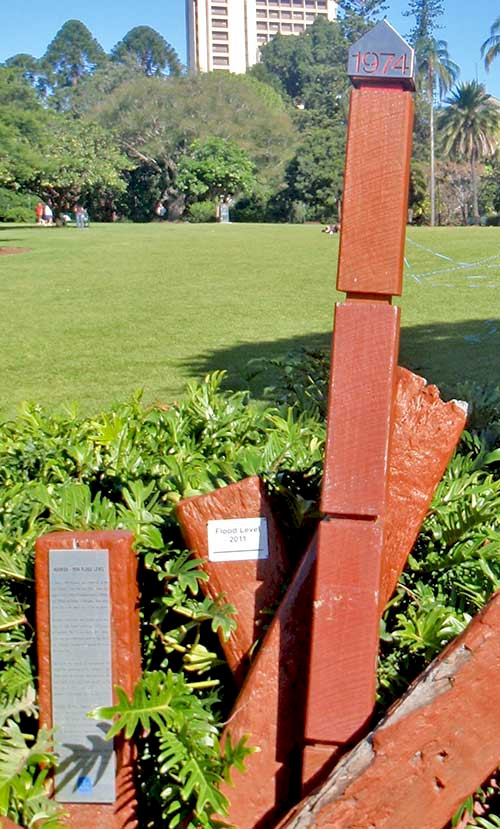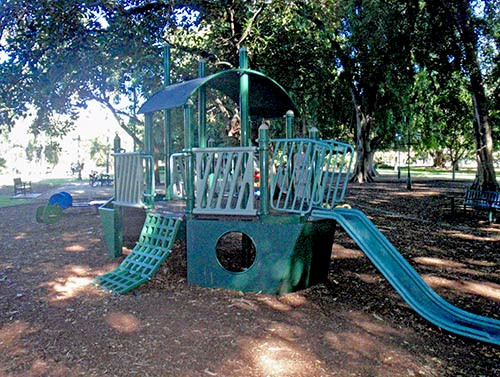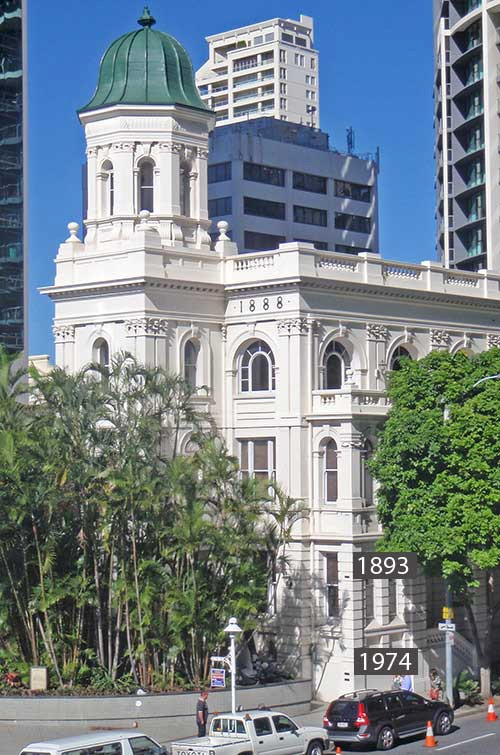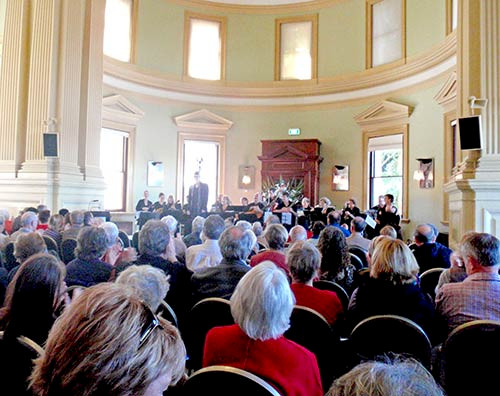Riparian Rhapsodies in Customs House
Bill Dennison ·As part of Brisbane's heritage week, a walking tour along the Brisbane River and a concert in historic Customs House was held on May 15. These events were sponsored by Brisbane's Living Heritage Network.
The walking tour started in the Botanic Gardens and visited the 1974 flood marker which has been modified to include the 2011 flood levels. We visited the site of the 1893 stranding of the naval ship Paluma, where there is a children's park with a climbing frame in the shape of a ship. We left the Botanic Gardens to visit the Naval Offices building, built in 1900. The Brisbane River tide gauge was just behind the building, the location where the flood heights are recorded. Just around the corner is The Port Office, which now houses a wine bar. One of the fellows in the tour used to work in The Port Office building and told the story of commuting to work via boat in the 1974 flood. We visited some historic buildings in the financial district, interspersed with glass and steel skyscrapers. The other interesting flood marker was on the Naldham Building, built in 1889 for the Australasian United Steam Navigation Company. The highest marker was for the 1893 flood, with the 1974 flood marker much lower down the building. It was humbling to know that the recent devastating 2011 flood only wet the very bottom of this wall. The various flood markers, combined with historic photographs, serve as vivid reminders about the extreme flooding that occurs in this region. The walking tour ended at Customs House, a 1889 building which is operated by the University of Queensland, used now for functions.



At Customs House, we attended a program entitled "Riparian Rhapsodies: The heritage of water celebrated in music and words". The master of ceremonies was David Gibson, a well known Brisbane historian. David Gibson introduced 3 speakers, interspersed with 3 musical pieces played by Mandolins in Brisbane. The first speaker, Ian Jempson CEO of the Queensland Maritime Museum, spoke about the early European accounts of the Brisbane River. An interesting musical piece was 'The Adventures of Duyfken' by Richard Charlton, a musical piece about the first European ship to visit Australia. The Duyfken was a small Dutch ship that sailed from the Dutch East Indies (now Indonesia) in 1606 and landed on the western shore of Cape York. The musical piece depicted the sailing voyage across the Arafura Sea and used discordant music to reflect the first encounter between indigenous Australians and Europeans. The mandolins were appropriate instruments for this historical tribute. Lisa Jones, Curator of the Queensland Police Museum, talked about the colonial life of Brisbane and the Great Fire of 1864. After a musical piece by Vivaldi, Carolyn Nolan, President of the Royal Historical Society, talked about how the Brisbane River was Brisbane's boon and bane, particularly timely with the recent 2011 floods. The final musical piece was the 'Diamantina Suite' by Keith Harris, a tribute to Lady Diamantina Bowen, the wife of Queensland's first Governor. She was a Greek noble who married George Bowen when he was stationed in Greece. The couple sailed to Brisbane from Sydney and arrived on 10 December 1859, which is when Queensland became a separate state from New South Wales. David Gibson explained that the voyage was so rough and the passengers so seasick that it took much longer than expected. For several years, the Bowens lived in Adelaide House, now part of St. John's Cathedral and then moved into the newly built Government House in the Botanic Gardens.

The heritage tour and concert which focused on the river and maritime history of Brisbane were very gratifying to see for several reasons. One reason is that the annual Riverfestival has been converted into the Brisbane Festival, losing the river focus. But events like this one keep a focus on the waterways. Another reason is that the blending of architecture, history and music provides people with multiple connections to the waterways. Finally, the thriving cultural life of Brisbane and the return of large numbers of people to the riverside venues after the January flood is a positive sign of recovery.
About the author
Bill Dennison

Dr. Bill Dennison is a Professor of Marine Science and Interim President at the University of Maryland Center for Environmental Science (UMCES).
Next Post > Walking tour of Brisbane (Part 3): Parliament, World War II and beyond
Comments
-
Atika 5 months ago
Thank you for sharing this great information with us, i really appreciate your post!